This picture shows the aurora (Southern Lights) of Saturn. The aurora looks like a blue ring of light over Saturn's South Pole in this picture. The Hubble Space Telescope took this picture in 2004.
Click on image for full size
Image courtesy of NASA, ESA, J. Clarke (Boston University), and Z. Levay (STScI).
Saturn's Aurora
Have you ever seen the Southern or Northern Lights? Did you know that other planets (besides Earth) have them too? Scientists call these cosmic light shows the "aurora". Saturn is one of the planets that has aurora.
The Sun shoots out lots of charged particles. That flow of particles is called the "solar wind". When the solar wind gets to Saturn, some of the particles get trapped in Saturn's magnetic field. Some particles crash into gases in Saturn's atmosphere near the planet's North and South Poles. That makes the gases glow, sort of like a fluorescent light bulb. That glow is the aurora.
The aurora on Saturn are much larger and last longer than the ones on Earth. Most of the energy coming from Saturn's aurora is not visible light. Instead, it is ultraviolet (UV) "light". Scientists use special telescopes and cameras to "see" the UV radiation.
The Hubble Space Telescope has taken some pictures of Saturn's aurora. The Pioneer 11, Voyager 1 & 2, and Cassini spacecraft have also observed Saturn's aurora.
You might also be interested in:

Text for this level has not been written yet. Please see the "Intermediate" text for this page if you want to learn about this topic. To get to the "Intermediate" text, click on the blue "Intermediate"
...more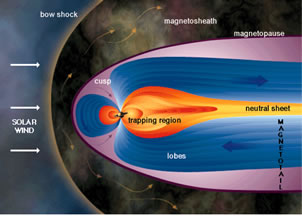
Saturn's magnetosphere is not as big as Jupiter's, but it is still pretty big. It is big enough to hold all of Saturn's moons. The shape of the magnetosphere is affected by its size. The shape is also
...more
The clouds of Saturn are much less colorful than those of Jupiter. This is because Saturn's atmosphere is made of more sulfur. Sulfur makes Saturn look yellow. The atmosphere of Saturn, like Jupiter, is
...more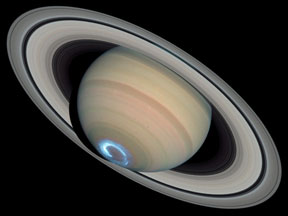
There's a lot of strange stuff going on at both the North and South Poles of Saturn. Two of Saturn's moons also have interesting polar regions. Let's take a look! The atmosphere and clouds are quite odd
...more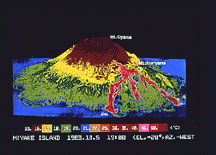
Text for this level has not been written yet. Please see the "Intermediate" text for this page if you want to learn about this topic. To get to the "Intermediate" text, click on the blue "Intermediate"
...more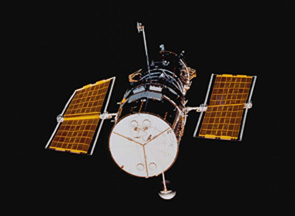
The Hubble Space Telescope (HST) is really neat! It was first launched in 1990, but scientists started building it in the 1970's! We have found all kinds of objects like stars, nebulae and galaxies. The
...more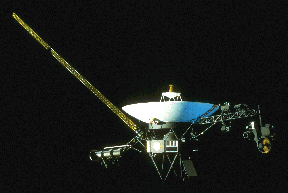
Unexpected discoveries made by the two Voyager spacecrafts during their visits to the four largest planets in our solar system have changed the field of space science. Voyager 2 was launched on Aug. 2
...more














